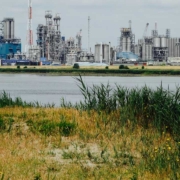Demand forecast. Challenges and developments
Demand forecast. Perhaps the biggest challenge for procurement and supply chain professionals. Especially when warehouse inventory begins to pile up.
Developments.
Demand forecasting is a challenge in every industry. Within FMCG perhaps the greatest. Last year, Walmart reported an inventory surplus of $1.5 billion. This was dwarfed by Nike, which had $9.7 billion worth of excess merchandise in warehouses.
Both Walmart and Nike had anticipated possible pandemic-related supply problems. But the logistical effects, including bullwhip, could neither be predicted nor controlled. The turbulent times of the moment caused companies to shift from just-in-time to just-in-case strategies. Another effect was the boom in consumer spending after the lockdowns. Increasing inventory seemed a logical choice. Unfortunately, many organizations did not anticipate that price inflation would reach the level it did. This resulted in a significant decrease in demand for nonessential goods.
The move to just-in-case strategy is in itself understandable when you consider that stockout situations, is the most annoying for companies. Not only does delivery to customers stall, but companies face enormous costs due to supply – and production downtime. Stockout risk then quickly becomes an acceptable fact of life.
Demand forecasting and data.
Since the late 1960s, data has become increasingly important. Not only because of the growing economy but also because software programs gradually became available for data analysis. By 2022, the US market for software was already $3.97 billion, but is expected to grow at 10.3% per year through 2030. With increased technology, you would also expect the accuracy of data analysis to increase. Nothing could be further from the truth. A ProGlove survey of warehouse managers in January found that only 39% felt they could accurately predict trends and patterns for the 2022-2023 vacation season, while 51% said predicting demand was their biggest concern in terms of inventory management.
Research shows that the human factor in particular is a distorting factor. Predictions are often adjusted by people who want to incorporate their “own opinions” into the analyses. The University of Pennsylvania research focused on economics, energy, transportation and population. The accuracy of prediction was found to have actually declined slightly over the past 50 years. Only in a few areas, elections, medicine, crime, have predictions improved. So the crux lies mainly with business, which has difficulty getting a grip on the fluctuations between supply and demand. A complicating factor within logistics, is transportation and the geographic distribution of sourcing. Multiple sources appear to host unstable production processes. Geographic dispersion creates many middlemen, trade barriers and geopolitical events that can undercut any forecast.
Improve demand forecasting.
What emerges from several studies is that sharing retail data, improves the reliability and accuracy of forecasts. Unfortunately, the information is not shared for price – or promotional strategic considerations. This is not entirely justified. In fact, simply sharing retail information does not reveal any strategic policies, due to the omnichannel sales effect. Sharing POS information can significantly help the many companies in the chain improve demand. And thereby align their sourcing and production accordingly. Even sharing the information anonymously is no problem at all with today’s technology.
It is therefore surprising that many supply chain leaders cling to outdated, outdated systems and software. According to Mckinsey, 73% of supply leaders, still use spreadsheets. And also, “SAP Advanced Planning and Optimization” is still wildly popular. However, APO is severely outdated and by 2027, even support from SAP will cease. Clearly, companies are holding on to older systems, despite the significant benefits that new technology offers, “because of the time and money required to replace them,” according to McKinsey.
Technology expectations.
Companies that do switch over too often appear to have too high expectations of technology. It is not a panacea that will solve all your problems. At least as important are your processes and the level of your staff. In addition, much software is too rigid to respond well to rapid change, causing supply leaders to revert back to spreadsheets. Then 2 parallel worlds are created. So does this now mean there is no good replacement for old methods of humans and spreadsheets? AI can make a difference here when it comes to scanning for historical statistics and news reports and identifying patterns that preceded previous drops in demand. AI can be put to work taking this data and creating triggers to predict future demand patterns, with this information then being used by supply chain managers and planners. This does require investing in new and young personnel who can easily familiarize themselves with this entirely new approach to demand forecasting.
Interesting links;
Translated with www.DeepL.com/Translator (free version)









